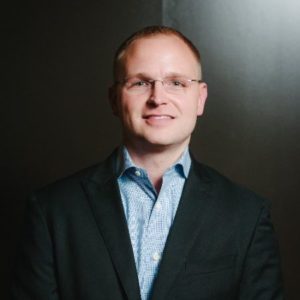
Tyler Girtman is Climatec’s Northern California Regional Manager. Civic Business Journal sat down with him to learn more about his role, goals, and challenges he has faced.
How did you get involved with Climatec?
I learned about Climatec when I was in college at Arizona State University studying to become a mechanical engineer and working part-time as a server at a high-end restaurant in town. One night, I served Climatec’s now-retired CEO, Terry Keenen, and his family. By the end of our conversation that night, he invited me to interview with Climatec’s team of directors. At my interview, he ripped up my resume (which did not have much on it anyways due to being in college!) and we spoke for hours discovering extensive overlaps in our professional philosophies and personal values. He then ended up hiring me as the firm’s first intern. We had 75 employees at the time. Now we’re at more than 900!
When I was brought on full-time, I started within the Building Technologies Division, where I learned how buildings can be smarter and perform better. I was then asked to help expand our Energy Services Division about 10 years ago in Arizona and California. In the last 15 years I’ve been with Climatec, I’ve developed a deep understanding of the intricacies of our work as a team through design, project management, and business development.
What do you do in your current role as a regional manager?
My team and I help local government agencies and K-12 school districts address and fund deeper retrofits, smart city technologies and infrastructure modernization projects that adhere to the client’s vision and outlook.
In other words, we approach projects by digging into the heart of the client’s needs and challenges to identify the right solutions for their community. We determine the most pressing challenges the public entity faces, such as the need to improve infrastructure, prepare for power shutoffs (resilience), reduce utility dependence, adhere to sustainability goals or improve general fund budgets. We then identify alternative funding solutions and deliver comprehensive programs that address clients’ unique infrastructural needs and political influences.
Tell us about a comprehensive program you worked on recently.
We recently completed the second phase of the City of San Leandro’s comprehensive infrastructure and smart city program, which will provide more budget relief, improve livability within the community and further reduce the City’s carbon footprint. This program modernized San Leandro’s highest priority infrastructure needs, implemented smart city technology throughout the city and provided nearly 1 mega-watt (MW) of renewable power.
The City was able to invest $9.1 million in infrastructure and sustainability solutions by working with us to obtain multiple funding sources, including nearly $2 million from a California Energy Commission grant. It’s been an exciting process because, from staff to City Council, San Leandro shares a consistent, future-forward vision that has further propelled their community through creative programs, like the smart city technology they deployed with Climatec.
Because of their united vision and our partnership, San Leandro is globally recognized as one of the smartest cities in the world as a recipient of a Smart 50 Award. The City is at the forefront of collaborative conversations with cities throughout the country looking to replicate their success. I look forward to helping them solve their next set of challenges!
Are there any current trends that you’re seeing in energy infrastructure in local government agencies?
We’re tracking on agencies’ desires to create net-zero energy (NZE) buildings and provide power resilience. In these cases, many low hanging fruit improvements for efficiency, like LED lighting, have already been completed. Now we are addressing deeper retrofits, such as window modernization, complex heating/cooling systems, battery storage, microgrid technology, renewables and smart technology integration. These NZE buildings are a win-win: they’re green and fiscally prudent. Especially as utility rates increase year after year, efficient NZE buildings will be even more important for public clients working with tight budgets.
Additionally, with Public Safety Power Shutoffs (PSPS) increasing in frequency, cities and districts are focusing on resilience. In order to keep students in school and services up and running for residents, we’re seeing increased demand for electrical microgrids, back-up battery storage and resilient water infrastructure systems.
What industry insights have you taken away from your job over the past 15 years?
First and foremost, I’ve learned that it is important to approach infrastructure and sustainability programs comprehensively instead of applying a band aid or siloed solution.
The most successful initiatives I’ve worked on have involved thoughtful planning that improves the entire city or district as a whole: financially, technically and politically. Our comprehensive programs help cities and districts resolve immediate and long term challenges. They become proactive, rather than reactive, ultimately saving significant resources and heartache in an emergency.
I’ve also noticed that many public entities aren’t aware of the range of funding options available to them to make smart infrastructure improvements. Based on my experience, this is typically due to agency resources being stretched very thin, making staff unable to focus on finding the money. In California, there’s a great deal of funding available if you know where to look or have a partner like Climatec to discover alternative funding opportunities.
What do you find most challenging about your role?
The unique and ever-changing energy regulations–unfunded mandates, in particular–our clients face make my work both challenging and rewarding. This regulatory environment pushes me to stay on top of what’s going on in Sacramento and make sure our clients understand rules and regulations. Especially as PSPS becomes more common and utility rates increase, clients face even more complexity when creating budgets and pursuing smart infrastructure improvements.
Our clients’ challenges are our challenges, so it is my priority to help our customers navigate these intricate budget and planning dilemmas.
What is one of your favorite parts about your job?
My favorite part of my job is piecing together turnkey infrastructure programs like puzzles. These programs often start without a clear form, much like the beginning of a jigsaw puzzle with pieces jumbled and laid out. Our team identifies and sorts out the various pieces: the district or city’s priorities, available funding sources, budget constraints and the newest technological innovations, to name a few. We then collaborate with agency staff throughout the process to ensure that we are building the right solution: politically, technically, and financially.
It’s very rewarding to watch all the pieces come together to form a cohesive program as we coordinate with our public agency partners and their communities. After the program is completed, I find it incredibly satisfying to watch our clients reap the benefits of better fiscal health and improved community services while having a positive impact on the local environment.

